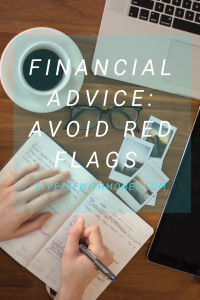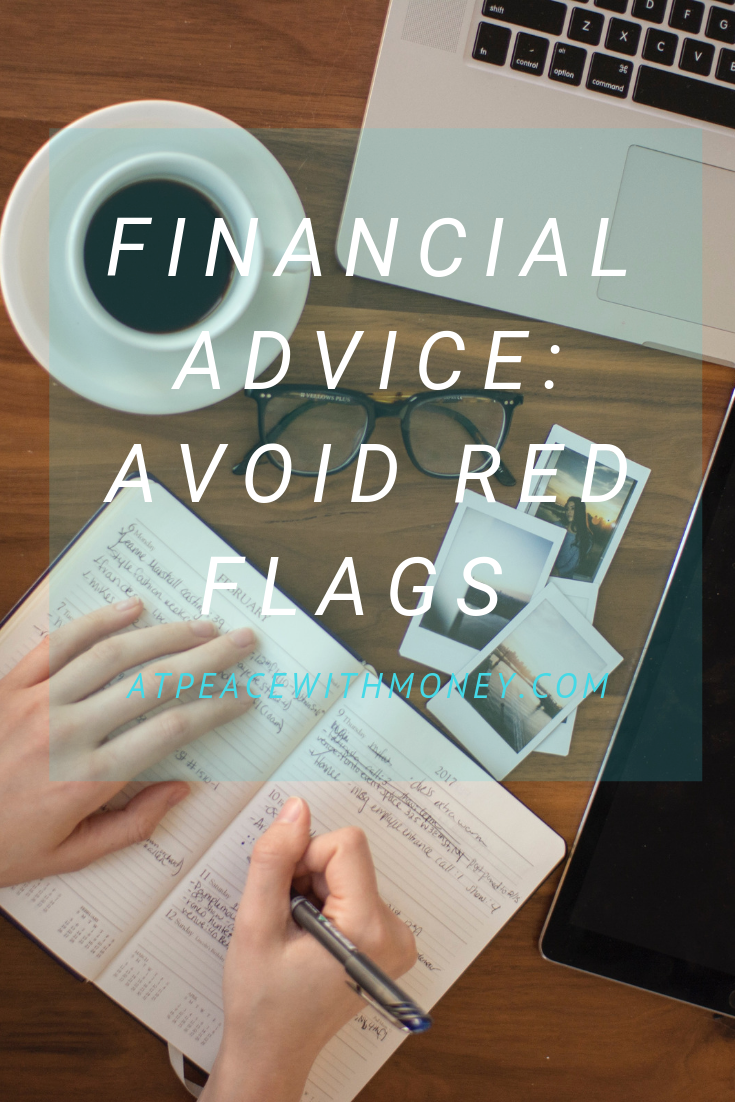Financial Advice: How to Avoid the Bad and Find the Good

Financial advice is important, but the wrong resources can steer you in a rough direction. You don’t want the resources you’re looking at to lead you to a place of boredom or despair due to unrealistic goals. Last time, I gave some tips on finding the right financial advice for you, but today I want to break down some red flags to avoid. Then, we’ll look at some signs that show you’re on the right path!
How to Discern an Unhelpful Resources
A financial resource may not be right for you if:
- The resource is targeted to an income level higher than yours. Even if you aspire to increase your income, financial advice will provide you with feasible next steps if it acknowledges your starting point. Starting out by reading investing guides for people with a $100k to distribute might leave you feeling alienated.
- The resource chastises you or shames you for habits or behaviors. While many of us do carry emotional baggage around money, I firmly believe we should not be put down for this, or for our financial habits. Shame and blame do not facilitate financial learning. If a resource is telling you to quit things that make life enjoyable, or scrimp every penny as a path to wealth, evaluate these strategies carefully.
- The resource uses financial jargon you don’t understand. Something like this can quickly lead you to boredom or discouragement. You can always look up the vocabulary words you don’t know, but finding something more accessible makes for a more pleasant and sustainable learning experience.
- The resource doesn’t reflect your vision for your business or personal finances. Not everyone needs or wants piles of cash – so you won’t enjoy a book about how to get that if that’s not what you want!
Signs the Resource is a Good Fit
Alright, we’ve looked at red flags, now let’s talk green flags. A resource can be great for you if:
- The resource acknowledges and takes time to help you work on your emotional stories and stressors around money. (One of my faves for this is The Art of Money by Bari Tessler)
- The resource is accessible, easy to read or consume, and enjoyable. The more you want to come back to something or refer to it, the more helpful it will actually be!
- The resource is tailored to your version of financial success and gives you steps for moving towards it.
- The resource is targeted towards your income level.
- The resource focuses on long-term solutions like mindset changes, money systems, and improved habits rather than “hacks” or penny-pinching.
 If a resource ticks all these boxes for you, it will probably set you down the path to financial wellbeing! And it will feel a lot better than trying to read something that just isn’t for you. Next time, we’ll talk about starting the search for resources. For now, feel free to do some good ol’ googling. You can also check out my article on some of my favorite resources. I post more resources and video summaries of important concepts on Facebook, so check that out and see if you get green flags!
If a resource ticks all these boxes for you, it will probably set you down the path to financial wellbeing! And it will feel a lot better than trying to read something that just isn’t for you. Next time, we’ll talk about starting the search for resources. For now, feel free to do some good ol’ googling. You can also check out my article on some of my favorite resources. I post more resources and video summaries of important concepts on Facebook, so check that out and see if you get green flags!
Angela
Image Sources: David Iskander, Thought Catalog



